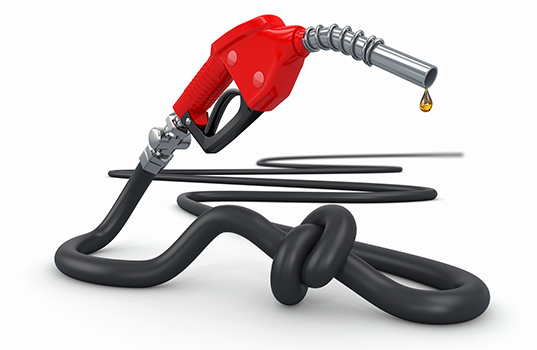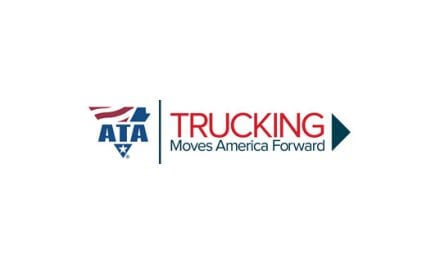Amid raw materials shortages, extended lead times and price increases, suppliers and distributors say to over prepare and over communicate.
By Maura Keller
When working seamlessly, supply chain management and logistics solutions effectively combine manufacturing, warehouse, distribution and transportation processes so that end users have access to products when and where they need them. But when there’s a proverbial “kink” in that chain, the entire process breaks down and can have dramatic impacts on an entire industry. Today’s supply chain issues are requiring manufacturers, distributors and end users to rethink their business processes and reevaluate their needs.
Bo Sasnett, CEO of equipment distributor D&H United Fueling Solutions Inc., is seeing supply chain issues across a variety of products and materials. Specifically, both demand and supply chain issues have impacted fiberglass and steel storage tanks (both underground and aboveground), piping, conduit, steel for buildings, electronic parts and even fuel filters.
“There is a robust demand for the industry’s products and services. This demand, combined along with the general supply chain issues from COVID-19, issues with key imported materials, logistics challenges and the general employment situation, has caused the perfect storm in not only the general economy but also our industry,” Sasnett said. “The biggest impacts are threefold.”
First, as Sasnett explains, in some areas, retailers are facing a challenge in getting certain replacement parts. Second, retailers and commercial customers alike are having to engage in a longer planning horizon for projects. And third, supply chain issues are causing prices to increase on certain materials and products.
Bryan Kohler, vice president and general manager at Acterra Group Inc., says the biggest supply chain issue impacting the petroleum equipment industry is the procurement of materials and materials costs. The Marion, Iowa-based company is both a supplier and manufacturer in the petroleum industry.
“We typically see one cost increase a year from most of our vendors that starts at the beginning of each year. As of today, we have seen multiple cost increases as our suppliers are not able to hold their costs due to the volatility of their raw materials,” Kohler said. “Of course, those suppliers are having problems with procuring raw materials, which in turn, causes longer lead times for us to procure their product and thus causes our customers to have extended wait periods.”
Acterra Group is currently unable to hold pricing for an extended period on its shop-fabricated above-ground tanks due to the volatility of the steel industry. “Our costs for steel have increased dramatically over the year compared to the same time period the last couple of years,” Kohler said.
Experts at Northwest Pump, a West Coast petroleum equipment distributor, say raw material shortages of things like resin, steel and microchips are impacting gas stations and c-store owners’ ability to install new equipment and maintain existing gear.
“As a distributor, our takeaway to combat the supply chain issues is to over prepare and over communicate as problems arise,” a Northwest Pump spokesperson says. “This can be tricky with things changing so quickly, so overstocking items and expanding our warehouses has become our new normal.”
Joe O’Brien, vice president of marketing for national equipment distributor Source North America, also points to extraordinarily long lead times on made-to-order items.
“Underground storage tanks can be a year out. Various fiberglass pipe and fittings have unreliable supply due to manufacturers not being able to gets resins to make the items,” O’Brien said. “Some common items for normal maintenance, such as fuel filters, are susceptible to the same kind of stockouts that surprise you when your brand of cereal or crackers is not on the shelf at your local grocery store. This makes everyone scramble, and the shortages often come with very little advance notice.”
The Root Cause and Impact
Historically speaking, manufacturers have relied on acquiring components and materials using just-in-time inventory models, lowering carrying costs and being more efficient (and thus more profitable).
As O’Brien stresses, this model assumes that the “tap would flow.” But between production shortages for raw materials around the world in nations affected by the pandemic, to production shortages in the U.S. to create the resins, microchips, rubber gaskets and more finished components, the mitigating factors surrounding the supply chain issues are complex.
“Many manufacturers initially told us they had labor issues that they presumed would be resolved once extended unemployment benefits expired—that reason has gone away, and they still have labor issues,” O’Brien said.
Kohler also believes what we are seeing is, in part, caused by the ongoing effects of COVID-19 and the recovery from this pandemic.
“The supply chain delays have reduced the availability of goods, which when combined with labor shortages, have caused a slowdown in production,” Kohler said. “A lot of the suppliers in this industry shut down or reduced the amount of staff allowed to work at the same time in their manufacturing facilities to be able to ensure that they were not contributing to any outbreaks within their factories.” This, of course, caused supply on hand to dwindle or be depleted.
Kohler says the most common comment he hears from companies Acterra Group currently does business with when asking how things are going is, “Great, other than trying to hire new employees, we just are not getting much for applications.”
Lead times for parts from time of order can vary tremendously, and the petroleum industry is not only affected by the petroleum equipment supply chain but also by the electrical industry supply chain.
“We are currently seeing long lead times from all of our suppliers that are impacting how quickly we are able to complete projects or even get the project started,” Kohler said. Above-ground tanks, for example, can have lead times of 12 weeks to 24 weeks, depending on tank size. Availability of other equipment can range from in-stock to a year.
“We are working with multiple suppliers in order to find ways to overlap our supply,” Kohler said. For instance, in the past, Acterra Group had relied on one vendor for certain petroleum equipment. That supplier has been experiencing supply issues with raw materials, so Acterra Group is now working with multiple vendors that can supply the same equipment, ensuring that the company has overlap in its supply chain.
Everyone involved in the planning for new fueling sites or major upgrades knows that their scheduling is unpredictable and subject to delays. As O’Brien says, the most significant impact is on unexpected price increases and surcharges.
“Not only have most manufacturers had three or more announced price increases in 2021, but several have also begun applying raw material surcharges between 3% and 10% to each order shipped—and some of these were even applied unilaterally and retroactively to purchase orders placed before the surcharge was announced,” O’Brien says. “This began a cascading chain of events between the manufacturer, the distributor, the contractor and the end user customer for absorbing the extra costs of those surcharges.”
To lessen the impact of the supply chain situation on the petroleum industry, Sasnett recommends customers and distributors/service providers communicate well regarding the issues. “Distributors and service providers should be proactive to communicate whatever the situation is,” Sasnett said. Even when lead times are not available it is critical to let all parties know of the status. In addition, try to establish a longer planning horizon for those projects that could be impacted.
“It’s also time to think ‘outside of the box’ and be creative to solve problems,” Sasnett said. “Our company has been proactively communicating lead times and planning with our customers. We are looking for creative and alternative ways to solve supply chain issues for customers. In addition, we have invested more in our inventory to try to anticipate and have more stock of longer lead time products and materials for our customers.”
Planning for the Future
New construction and major upgrade projects within the petroleum industry are still proceeding, and the materials are being ordered and brought into a distributor and logistics provider like Source North America, but many projects will remain on hold for delivery until key items come in.
“This might be 1% or 2% of the project value, but the project can’t really start in earnest without them,” O’Brien said. “A normal project in a normal year would be handled confidently when ordering six weeks in advance—now three months would be optimistic and six months is not far-fetched—and if the project requires a tank, then it could even be a year.”
So how long is this situation going to last? Kohler believes it’s going to get worse before it gets better.
“Based on some of what I have heard from suppliers, we will be dealing with some of these supply chain issues through 2022 before it gets better,” Kohler said. There may be a silver lining. “I have already heard of some of our suppliers bringing some production back to the United States,” Kohler said. “If this is the case, this would be a benefit to our economy with the added jobs, as well as hopefully alleviating some of the supply issues.”
Jason Blake, executive vice president at Petroleum Equipment Institute, says PEI’s members are now planning out more than two years ahead to adjust to supply chain shortages. “In some cases, they are putting projects on hold,” he said.
No one can predict how long this supply chain shortage will last, but remembering to work with the customer to troubleshoot issues and figuring out an option B or C has been Northwest Pump’s way of pivoting and moving forward. “Our customers and their feedback are the best way to get ahead of upcoming needs and frustrations,” a Northwest Pump spokesperson says. “We try to maintain a constant flow of open communication.”
Source North America’s customers realize that these shortages are not the company’s fault and are temporary, and the Source team appreciates that they need to cooperate with customers so that Source can identify the most critical items and communicate with manufacturers on those items that they should produce.
As an example, a piping manufacturer might produce 150-200 separate SKUs from the same basic set of raw materials, but to keep up with demand they should focus on 10 or so.
“As a stocking distributor we can identify and advise on those 10 key items. As a distributor, we have been able to secure the resources to build up our inventories—in terms of both capital investment and physical warehouse space,” O’Brien said. “If the customer and distributor and manufacturer do truly work together, the reward is in the long-term relationship that can survive any future issue.”
Maura Keller is an award-winning freelance writer, editor, book author and proofreader with over 22 years of experience in the downstream petroleum and convenience store industries.









